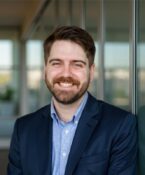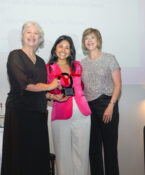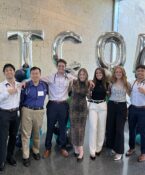A Dose of Economic Theory
Supply and demand: it’s the central economic theory underpinning free markets everywhere. In a perfect world, a manufacturer makes the right product in the right quantity and consumers buy at the right price. Voila, equilibrium!
But it’s hardly perfect out there. Our domestic automotive industry is a supply-and-demand equation that’s painfully out of balance. Another is health care: specifically, the growing imbalance between physicians and the expanding population they serve, especially here in Texas.
According to a recent briefing document prepared for the 81st Texas Legislature called the "2009 Medical Education and Physician Workforce Consensus Statement," Texas ranks 43rd in physician-to-population ratios in a state-by-state comparison. Even though the report notes that "[n]ew physicians have been added to the Texas workforce in record-high numbers since 2003, [but] these gains, although significant, are failing to meet growing demand." The document also says that Texas faces a shortage of physicians across virtually all medical specialties that’s expected to worsen over the next decade. (The briefing was assembled with input from the state’s nine medical schools, two health-related institutions, and state teaching and children’s hospital and medical associations).
If we simply increase the medical student supply, we should be able to meet growing demand and solve the problem. The projections seem to bear this out: Texas led the nation in population gains in 2005 and 2006 and is projected to grow 21 percent by 2015. Medical school enrollments in Texas are expected to grow 30 percent during the same period. So the indicators seem to point to an adequate supply of physicians that will adequately serve the demands of an ever-expanding population.
But as noted, it’s hardly a perfect world. The rub is that while medical school enrollments are growing, opportunities in graduate medical education (GME) are not. (GME includes residencies and fellowships in teaching hospitals and academic health centers). Simply put, medical school prepares a physician for entrance into a GME program, not for direct entry into medical practice. If Texas lacks an adequate supply of GME opportunities, then students will be forced to go outside the state to complete their residencies and possibly begin practice.
And that’s exactly what’s happening. Texas is the second-most populous state (behind California) and is currently seeing a healthy expansion of medical school students (25 percent). But we’re only ranked 27th in the number of available GME slots. And since GME programs are expanding in Texas at barely 4 percent, it is clear that we do not have nearly enough places for these students to go, in order to hone their skills and talents. (Right here in Tarrant County, the number of residency slots has remained flat and actually reduced in some areas).
To quote directly from the document’s findings: "Texas medical school enrollments are growing more quickly than GME programs. Unless GME programs expand, Texas will lose medical school graduates, as well as the state’s investment in their medical education, to other states."
The cost is not insignificant. Each graduate who leaves the state to practice elsewhere represents a net loss of more than $200,000 in state funding. The state also forfeits the economic benefit that a physician’s practice brings to a community, estimated at an average of $750,000 a year per practice.
The solution is classic supply-and-demand: align GME growth with medical school expansions. Easy to say, but as any economics major will attest, not nearly as easy to do. Expanding GME pipelines, along with pipelines for more medical students to offset the impending physician shortage, will call for direct investment from the state into programs that provide real, long-lasting opportunities for our students and keep them in Texas, where they can provide for the needs of an increasing population with the latest medical knowledge and preparation.
Locally, we’re fortunate to have several outstanding hospitals with the potential to develop new GME opportunities. However, this will create a shift in our longstanding culture of supply: namely, our over-reliance on recruiting physicians from other communities across the country. But the upside will be a much better ability to serve ever-increasing population demands with a home-grown supply of physicians who are committed to living and working in Texas.
Medical students who complete both medical school and residency training in Texas are three times more likely to stay and practice in the Lone Star State. As business leaders, we must insist upon improving the GME opportunities for our medical students to stay in Texas and build their careers. We have the necessary infrastructure and a ready source of fledgling physicians: all we need is the strength of will to make the necessary changes to our theory of supply. The dividends include better health for our citizens and a healthy, competitive workforce for the future.
If we do not work with our political leaders to expand GME opportunities in Texas, we are committing ourselves to the medical educational equivalent of short-term mortgages that will jeopardize our future well-being, both economically and from a health perspective. And that’s no theory.
Scott Ransom is president and professor in obstetrics, gynecology, health management and policy at the University of North Texas Health Science Center at Fort Worth.






Social media